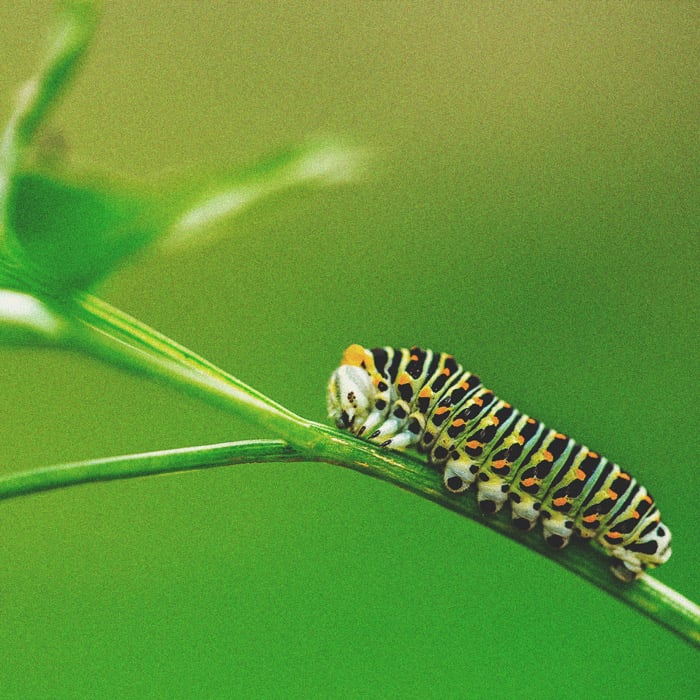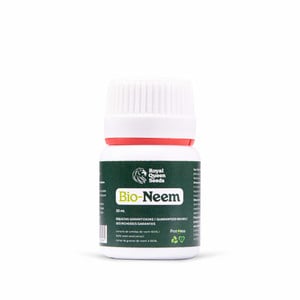Included FREE items

The Basics of Cannabis Outdoor Growing (Part 4)
When it comes to growing cannabis, nothing is worse than finding a pest infestation. All sorts of nasty insects would just love to spoil your grow. Learn how to stop them right in their tracks.
In the previous three parts of Royal Queen Seeds’ basic guide to outdoor growing, we learned about selecting the right strains, finding a suitable growing location and the benefits of starting a grow indoors. We looked at organic soils and learned about proper watering techniques. We also talked about the importance of camouflaging and how to protect an outdoor grow from wildlife. If you missed any of the earlier parts, you can check them out using the links below.
In the fourth part of our outdoor growing guide, we turn our attention to the ever-present challenge of pests. Many nasty critters out there seem to love nothing more than making the cannabis grower’s life as miserable as possible. When we grow outdoors, we need to be especially watchful, as the chance for a pest infestation that can destroy our grow is normally higher when compared growing indoors.
The good news is that it is easy to learn how to identify, prevent and combat common pests before they have a chance to do much damage. In this part of our outdoor growing guide, we look at the most common cannabis pests and show you what you can do about them.
Pest Prevention
When we grow outdoors, we have less control over our grow compared to when we grow indoors. We’re at the mercy of not just wind and weather, but also have to deal with the bugs and insects Mother Nature throws at us. When it comes to pests, prevention is the best way of dealing with problems, as you stop them from ever occurring. Here are some steps you can take to minimise risk.
Sterilize your Soil
One cause for a bug infestation can be the quality of the soil. Your outdoor soil may contain pathogens and insects, just waiting to devour your harvest. You can limit the risk of contaminated soil if you get commercial soil or soilless mixes from a reputable vendor. However, some lower quality and “bargain” commercial soils may sometimes come with insect larvae and bugs as well. A way around this is to sterilise the soil that you want to use, especially if you plan to use outdoor soil in your grow. Methods such as soil solarisation or steam sterilisation can kill off harmful pathogens and insect larvae, reducing the risk of these pests.
It is worth noting that this is quite an extreme measure. Sterilising your soil will not only kill the bad things in it, but also the good. If you do this, you will have to go to extra lengths to reintroduce beneficial bacteria and microorganisms.
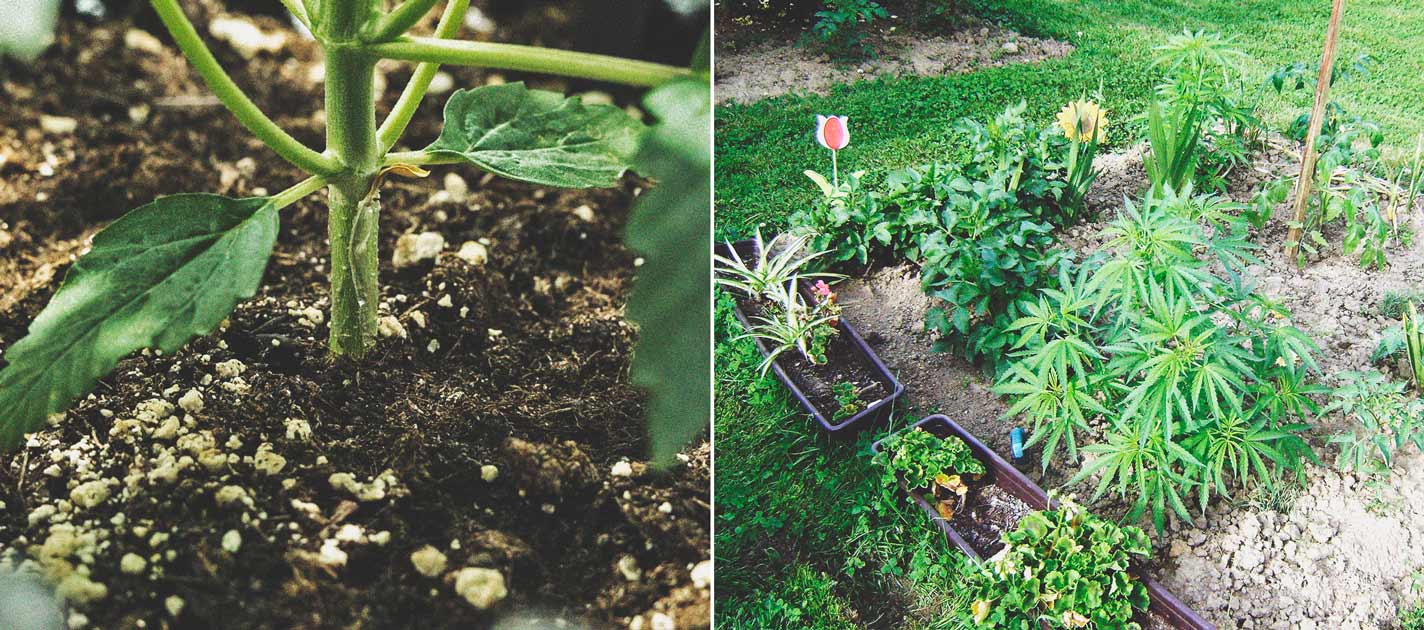
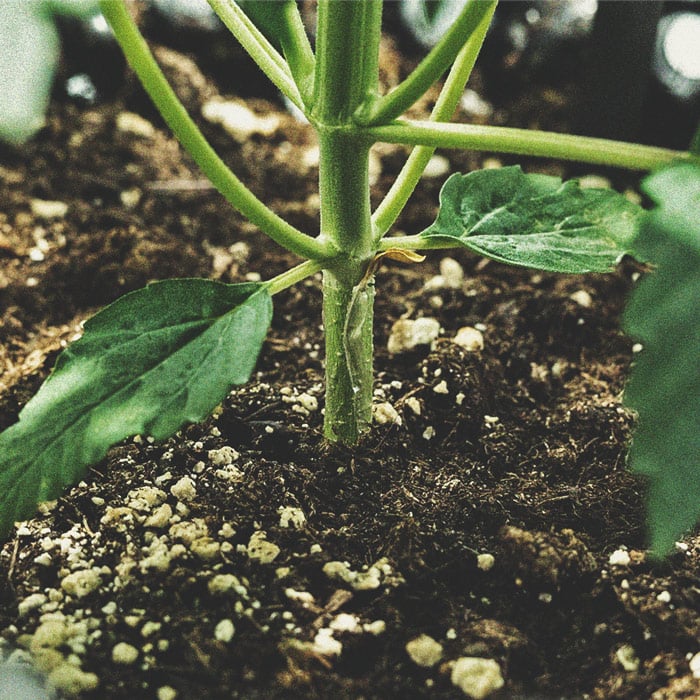
Grow Plants That Ward off Insects
Mother Nature can make a grower’s life difficult, but she fortunately also provides effective remedies at the same time! One of the best things you can do to prevent many common types of pests such as spider mites, aphids, or rodents is to grow companion plants. For marijuana, companion plants that repel insects and small animals include garlic, onions, geraniums and marigolds. Garlic is especially effective against aphids and spider mites, some of the most common cannabis pests. Garlic can even repel mice and other small critters. Also, planting companion plants between your outdoor cannabis plants will not only help repel and prevent pests but also help to disguise your grow.
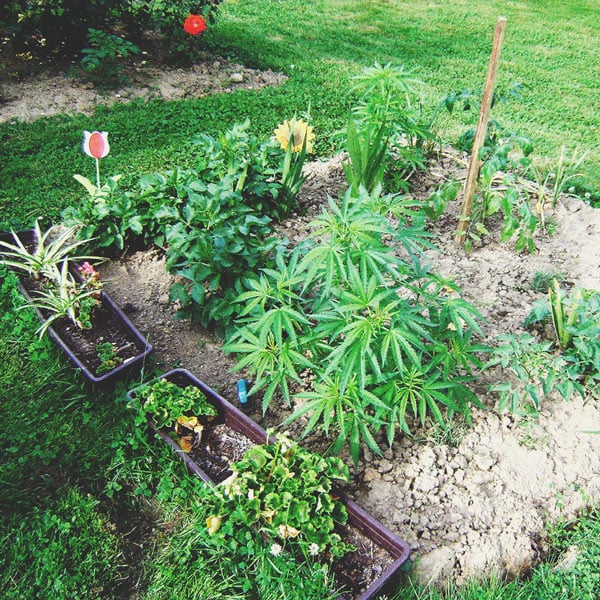
Use Beneficial Predator Insects
Many pests, such as spider mites and aphids, have natural predators who just love nothing more than to eat them. These natural enemies are an excellent way for the cannabis grower who wants to control pests naturally and organically to protect their crop. For our purpose, Lady Bugs (“Lady Birds” in the UK) can be ideal, since they prey on both aphids and spider mites. For even more effective spider mite control, you can look into predatory mites from the Phytoseiulus family. A lot of well-sorted grow shops and gardening shops carry Lady Bugs, predator mites and other beneficial insects and organisms.
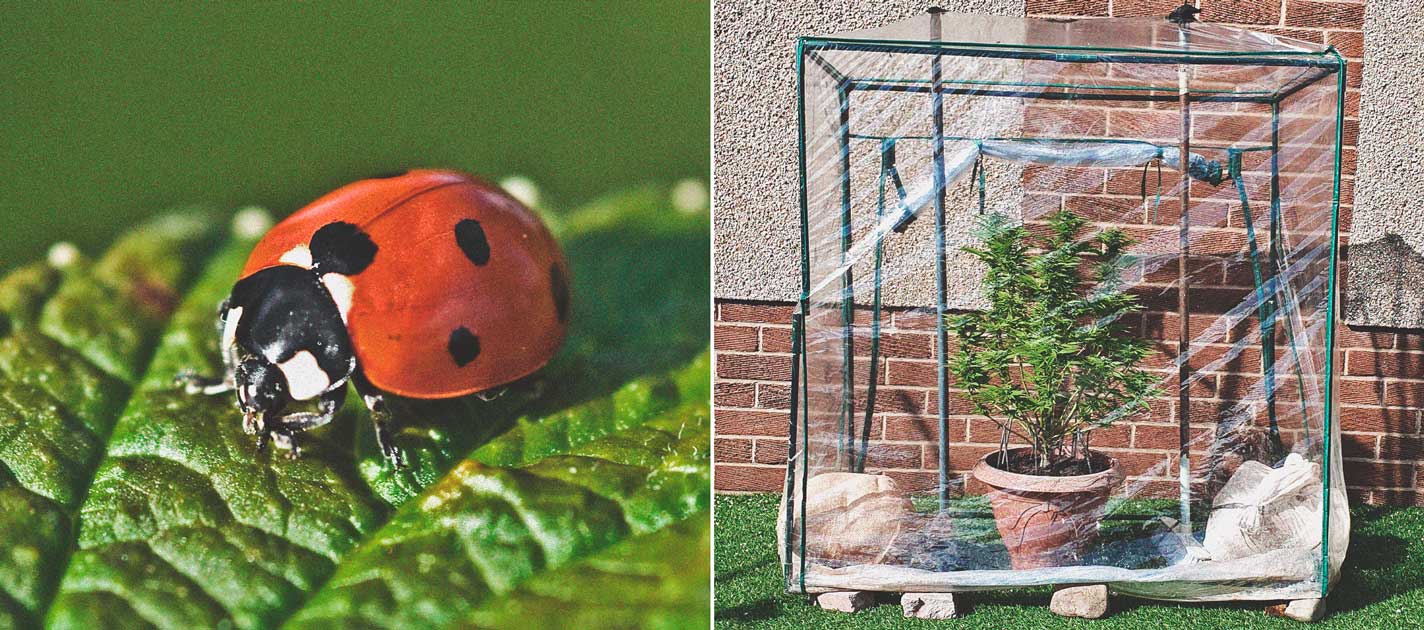
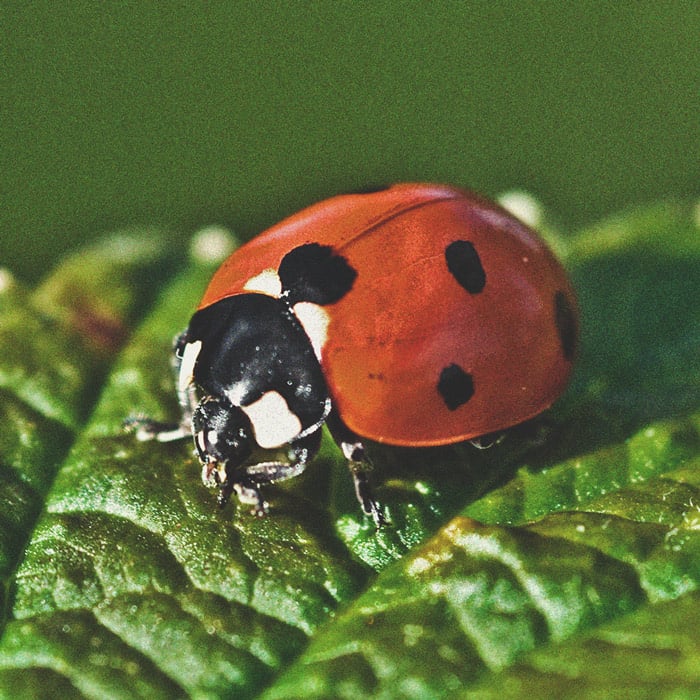
Use Natural and Organic Pesticides for Prevention
There are many natural and organic ways you can prevent a pest infestation before it happens. Some organic pesticides work as pest repellents, while others can strengthen your plants’ natural resistances, or they can do both.
Among these natural organic pesticides are Neem oil, karanja oil, citrus oil, cayenne pepper and garlic oil. Farmers have known about the effectiveness of these organic pesticides since ancient times. As opposed to chemical pesticides, natural insecticides do not cause any harm to humans, animals or your plants. They are normally very safe to use. It is good practice to preventatively spray your plants at regular intervals. Alternate between different organic pesticides for maximum effect. As an example, you could use a natural pesticide made from Neem in the first week, the next week you spray a natural insecticide that contains garlic oil and in the third week, you use a citrus oil based insecticide. Outdoor growers sometimes treat the area around their plants in a “magic circle”. Rather than directly spraying the plants, you spray a circle at a distance of at least one metre around your plants. This is especially helpful during flowering where you want to avoid spraying anything on your plants and buds.
Build a Wire Cage
If critters such as rabbits or other larger pests are taking a liking to your outdoor cannabis, you may want to consider fencing your plants in. You can do this with some chicken wire and bamboo sticks that you can find in DIY or gardening shops. It shouldn’t be a problem to build a wire cage or fence to effectively protect your plants from birds, rodents and other animals. Just know that any structure may make your grow more visible, especially if you’re doing a guerrilla grow. Keep that in mind before you think about making such a structure.
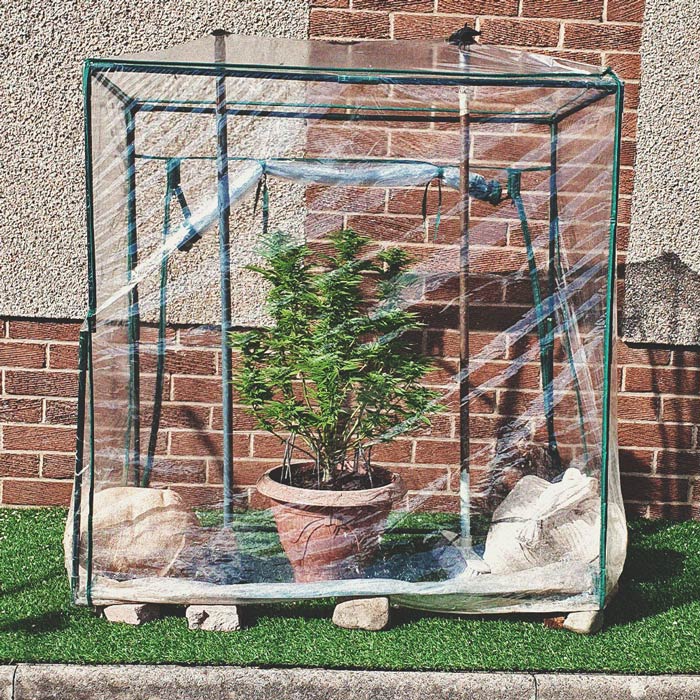
Spotting And Dealing With Pest Infestation
With the above tips, you can often prevent a pest infestation before it happens. Then again, you cannot blindly rely on them to keep your cannabis 100% safe. Finding that a pest has chosen your cannabis as their new home is simply all-too-common. There is no reason for panic, once you have learnt how to spot and deal with them, they can often be removed before they cause too much damage.
Here is a list of the most common cannabis pests, how to spot them, and how to effectively and naturally get rid of them.
Spider Mites
What are they?
Spider mites are the bane of every cannabis grower simply because they are the most commonly encountered pest. If undetected and untreated, spider mites can destroy entire grows. Fortunately, they are relatively easy to combat.
How to spot them?
Spider mites are very small, and they are not easy to see with the unaided eye. They look like tiny dots. The first indication of a spider mite infestation is normally very tiny, yellow spots on your plant’s leaves. You may need to use a loupe or microscope to see the mites on the underside or top of the leaves. This progresses into leaves becoming covered in a dense web – which is much more obvious to see. The mites look like small spiders (hence their name) and can be white, yellow or brownish red. The most common one is the two-spotted spider mite - it has two spots on its back. With a loupe you can also see their eggs; they look like tiny jelly-like transparent bubbles.
How to treat them?
To get rid of the adult mites, you can spray a 2% solution made from insecticidal soap. Insecticidal soap is very safe to use. Neem oil is another effective and purely organic pesticide that works for spider mites. Although Neem oil is more preventative and doesn’t kill them on contact, it can be best to make a solution of insecticidal soap with some Neem oil mixed in for maximum effect.
Lady Bugs and the Phytoseiulus persimilis predatory mites are the natural enemies of the spider mite. If you introduce these to your growing area, they will devour your spider mites.
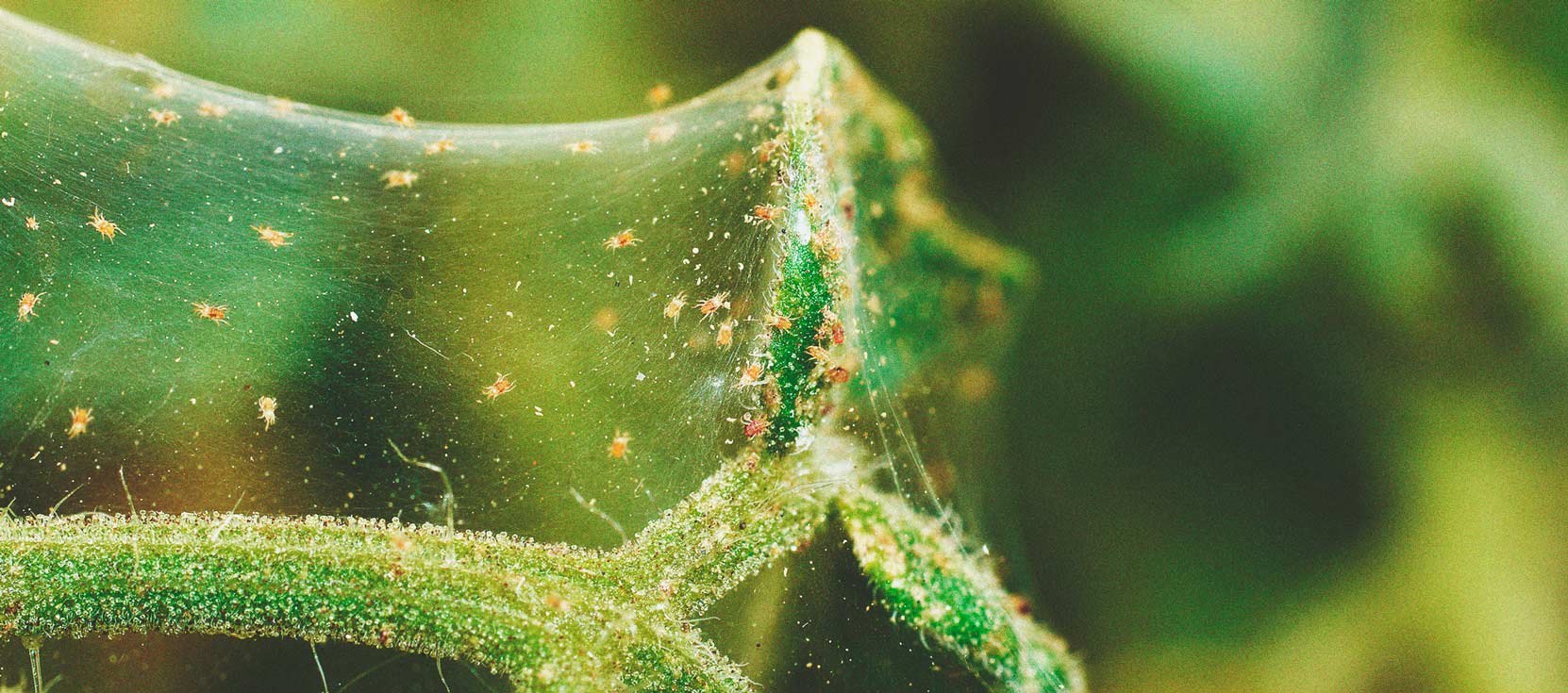
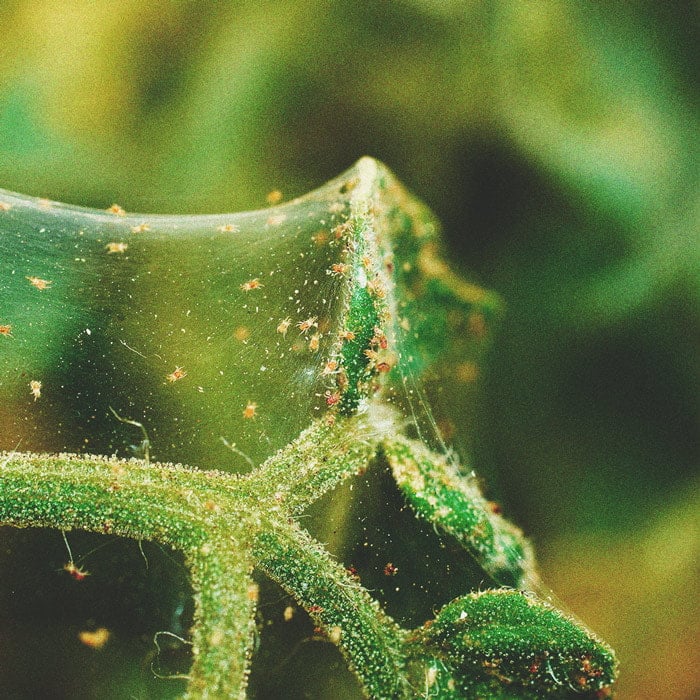
Aphids
What are they?
Aphids are soft-bodied small insects that can come in many colours such as green, yellow, black, brown or red. They are tiny, oval-shaped, and many have long legs, wings and antennae. Sometimes you can find them in large colonies hurled together on the underside or the top of leaves. Aphids suck and feed on the sap of cannabis plants. They secrete a clear, sugary and sticky substance that is known as honeydew.
The honeydew is a problem in itself, as it can encourage the growth of a sooty-looking black mould when it accumulates on your plants. You may be interested to know that aphids often attract ants, as the ants feed on honeydew. Ants have been observed to nurture and “milk” aphids for this purpose. You don’t want ants added into the mix, so it is best to deal with aphids as soon as you see them.
How to spot them?
Aphids are bigger than mites so you can spot them somewhat easier, especially when there are large colonies. They are tiny, greenish and half-transparent. If you have an aphid infestation, you will normally also find the clear, sugary honeydew on several spots on the leaves. The appearance of ants can also be a sign that you have an aphid infestation.
How to treat them?
As with spider mites, spraying aphids with insecticidal soap and Neem oil can be very effective. Just know that you need to repeat the treatment at regular intervals. It is a good practice to spray one day, then wait 3-4 days, spray again and then repeat every week until the infestation is gone. Spray in times of low light. The best time is in the evening or early in the morning.
Lady Bugs are the natural, biological predator of aphids so you may want to look at introducing them into your growing area as well.
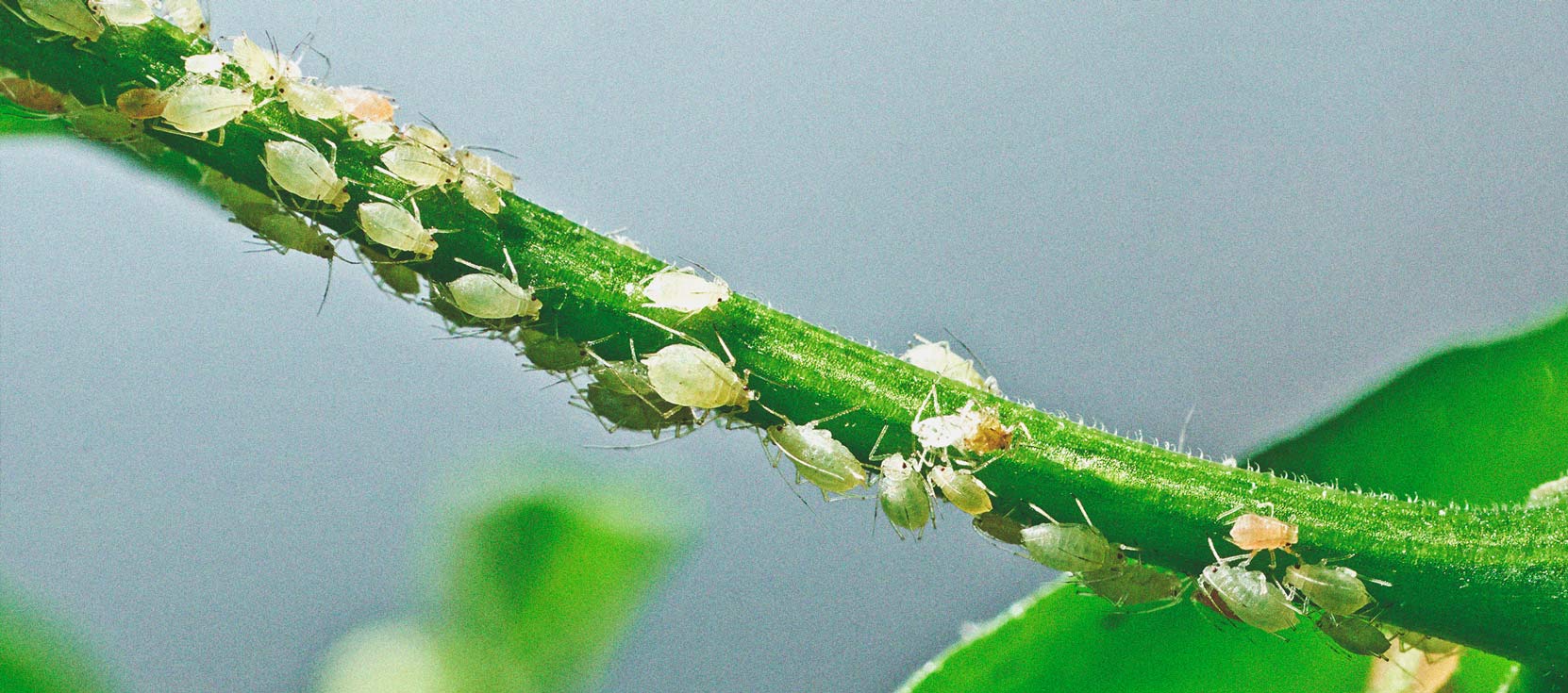
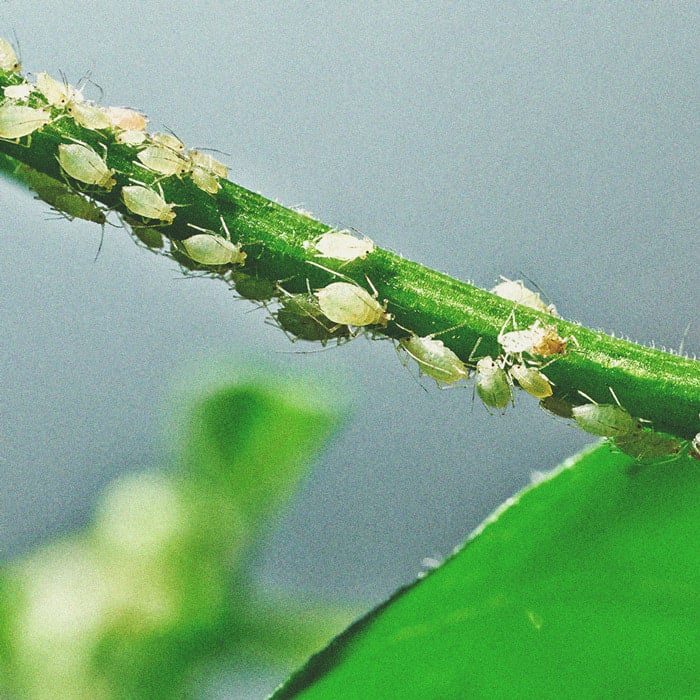
White Fly
What are they?
White flies are another very common marijuana pest, especially for outdoor crops. They feed on the plant’s chlorophyll and can literally suck the life out of your plants. White flies are flying insects that can be compared to tiny moths.
How to spot them?
These tiny white flies hide on the underside of your plant’s leaves, so you might not immediately spot them. One indication of a white fly infestation is when you shake a plant, and hundreds of them will fly off. Similar as with spider mites, they will cause tiny white or yellowish spots on the leaves.
How to treat them?
Here too, insecticidal soap and Neem oil will come in handy. Mix a 2% solution of insecticidal soap and add some Neem oil for the best effect. Spray regularly until the infestation is under control.
The tiny wasp Encarisa Formosa is the natural, biological white fly predator. If you can get hold of them and encourage them to hand about in your garden, 2-3 of those wasps per plant usually does the trick.
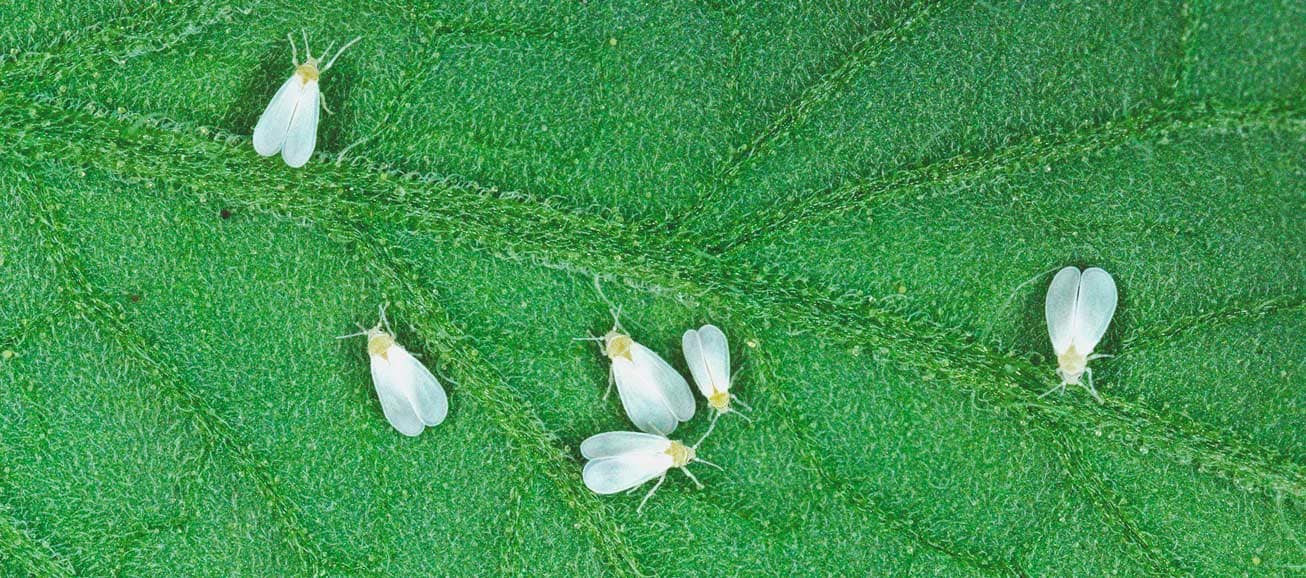
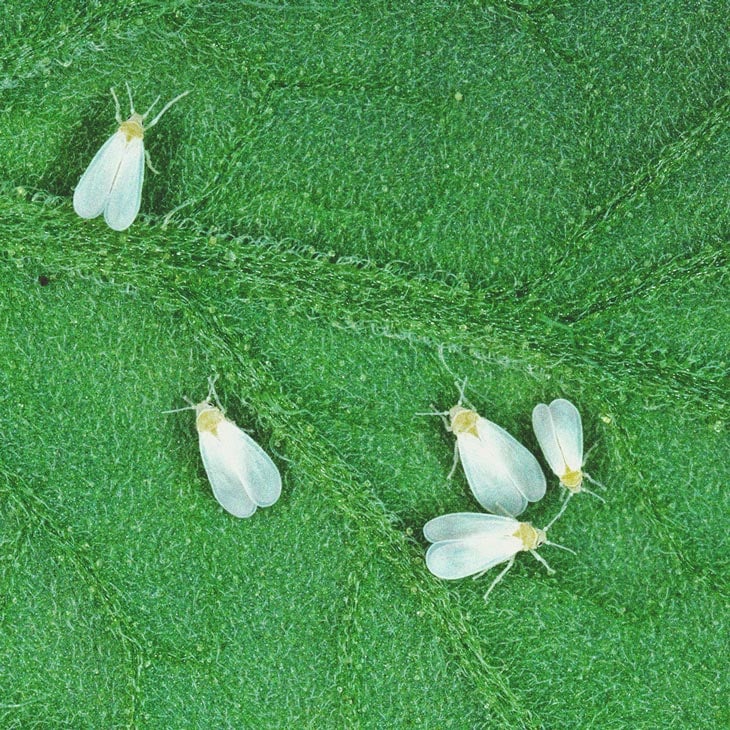
Caterpillars
What are they?
Caterpillars are the larvae of butterflies and moths. They can come in different colours although they’re commonly bright green. Caterpillars normally look like small worms although some of them can be fuzzy. They are very common pests especially outdoors where they can cause massive crop damage if undetected.
How to spot them?
Although caterpillars can be quite large, an infestation is not always obvious. Sometimes you don’t see the caterpillars themselves since they dig themselves deep into your buds where they happily eat away. What you will spot are mysterious holes appearing in your bud, and missing chunks on leaves. Worse, once a caterpillar has made its way into a bud, the affected bud will likely start to rot.
How to treat them?
The most effective and natural biological way to get rid of caterpillars is to use an insecticide that contains bacillus thuringiensis (BT) bacteria. This type of bacteria is safe to use and won’t affect beneficial insects.
It is very important that you spray bacillus thuringiensis either preventatively or at the very least when you see the first sign of caterpillar damage on your plants. Repeat the treatment every week until the infestation is under control. You should also repeat the treatment after heavy rain. As with most natural and biological ways to get rid of pests, bacillus thuringiensis doesn’t immediately kill the caterpillars, although it does stop them from eating pretty much instantly. There is no reason to panic if you still see some caterpillars right after spraying. If you find darkish, mouldy areas on buds from caterpillar damage, immediately remove the affected parts to prevent the spreading of mould.
Pests can be a big problem for any cannabis grow, but only if you’re not informed. Once you know how to prevent, spot and get rid of pests, they don't have to be more than a slight nuisance - rather than a serious threat to your harvest. Today you can find many natural and organic ways to help you get rid of pests effectively, without the negatives of chemical pesticides. And remember, prevention is the best form of defence!

